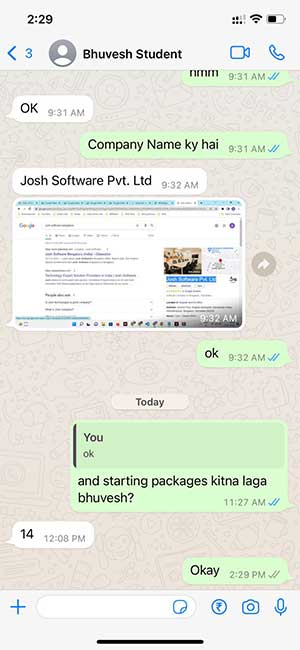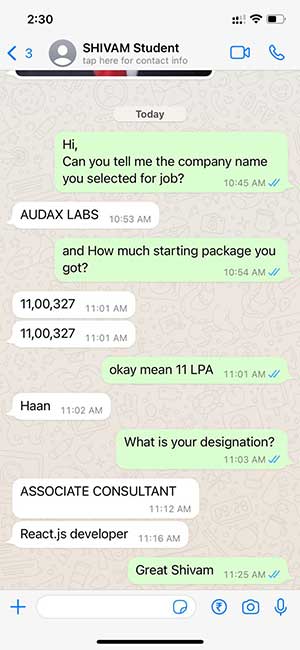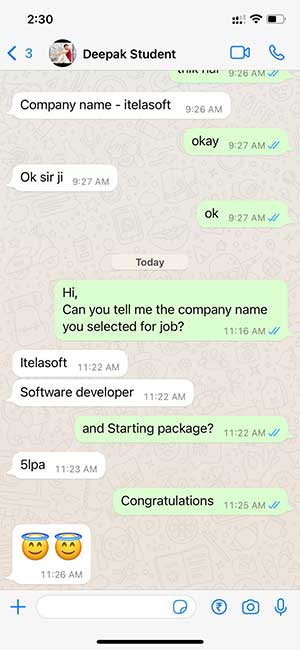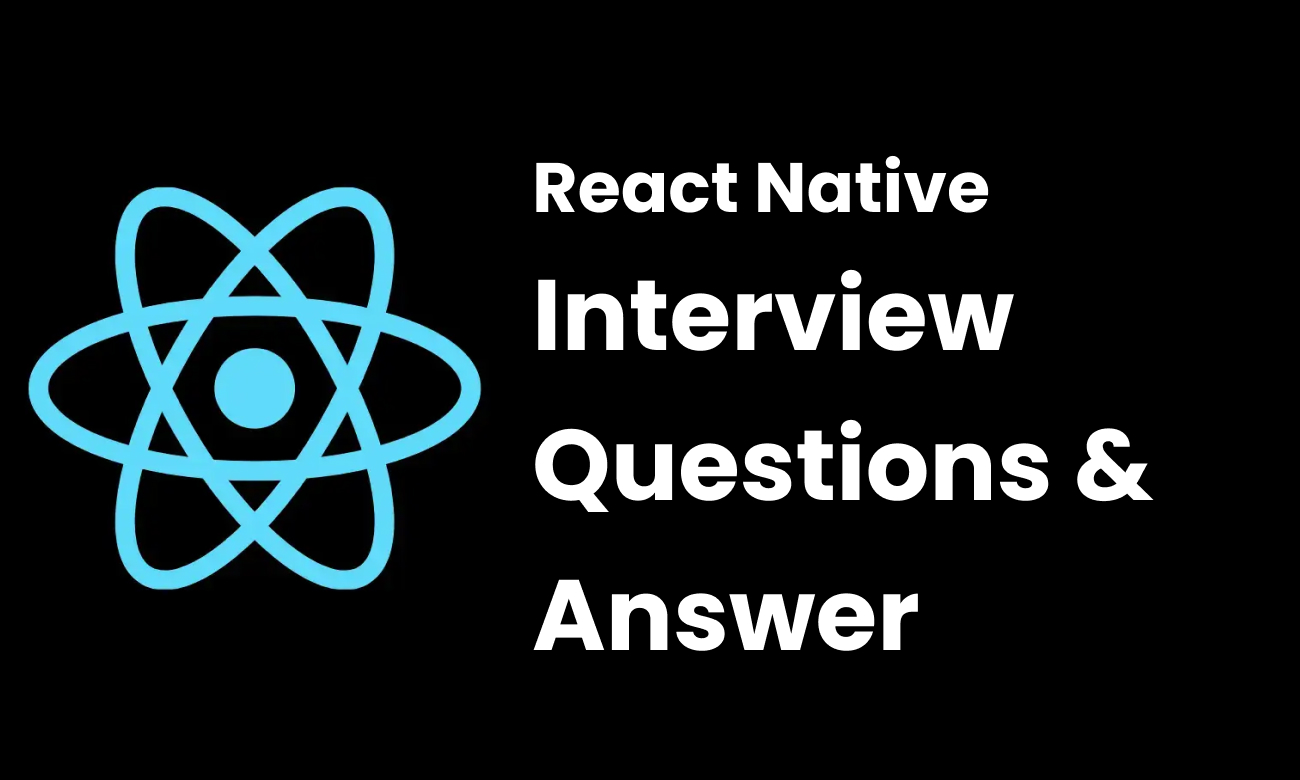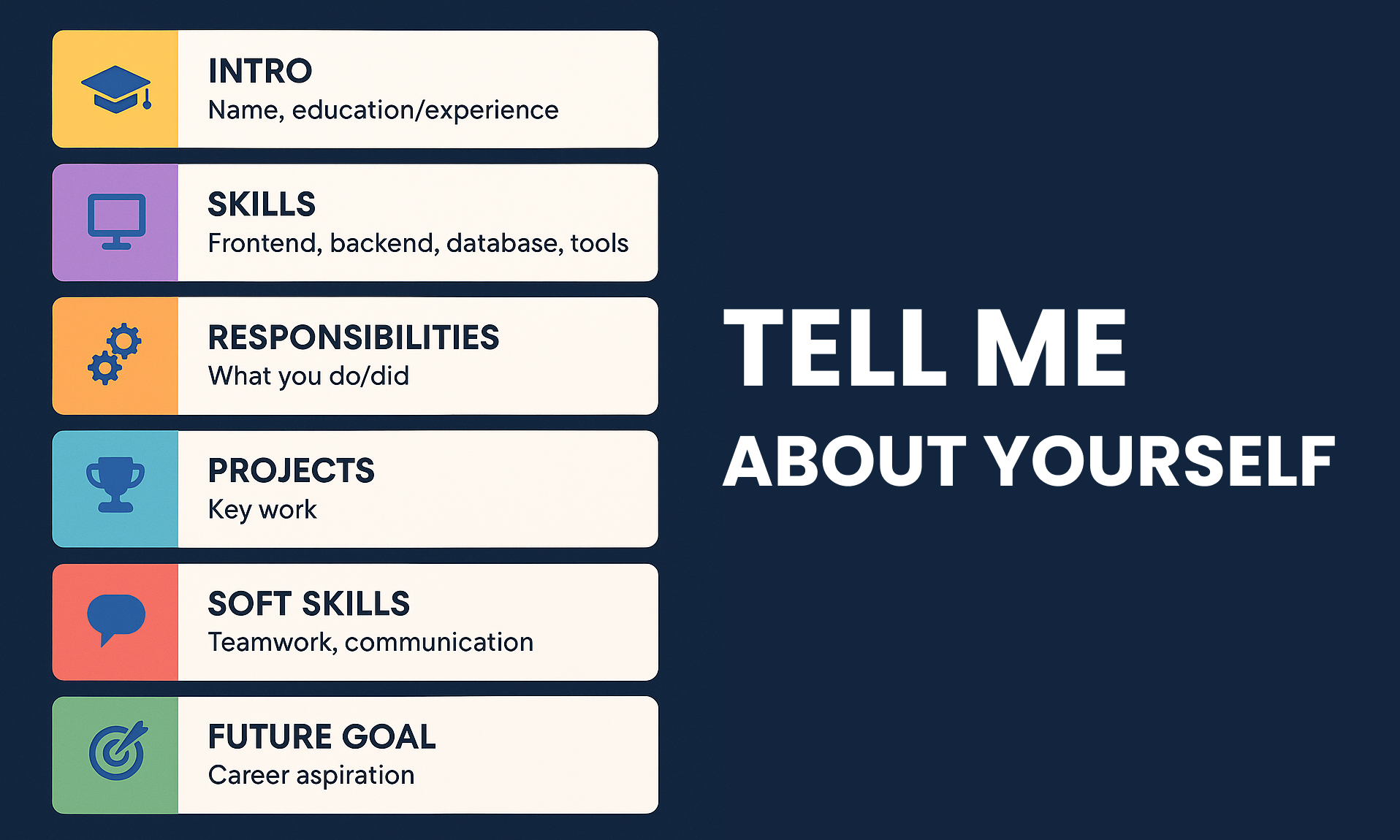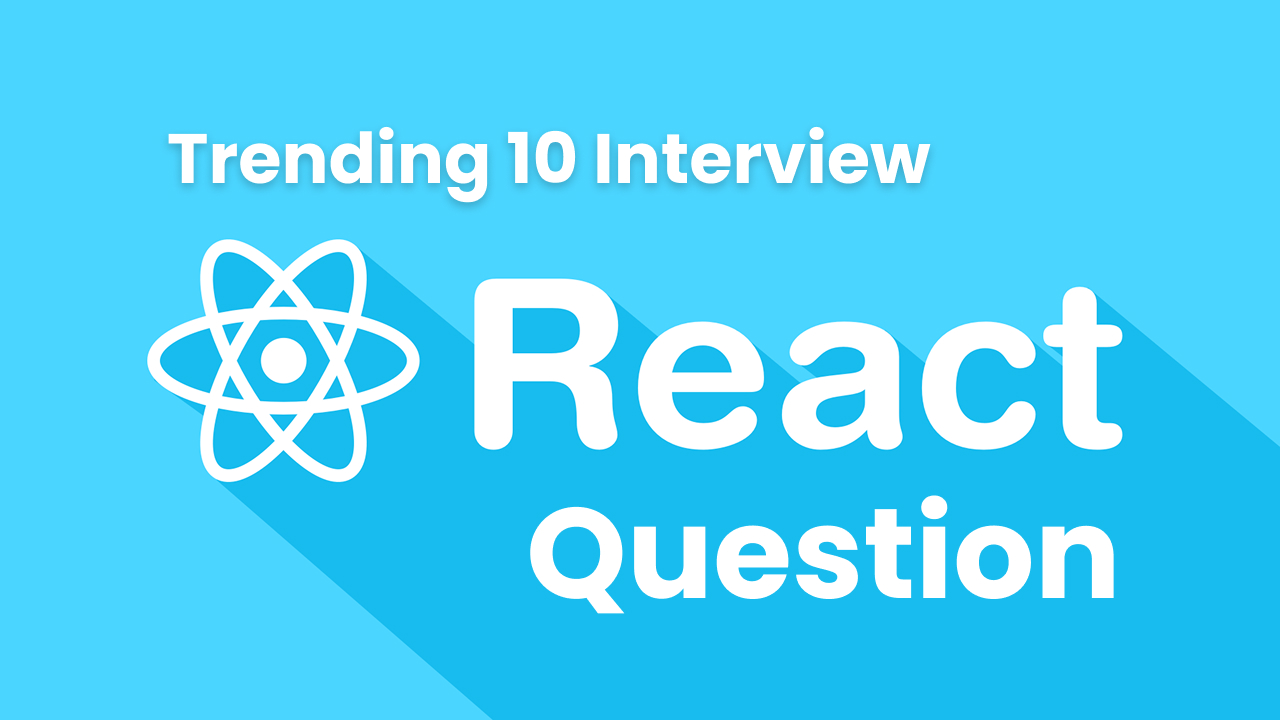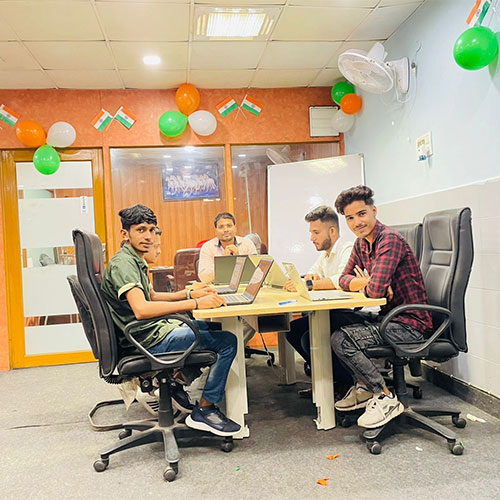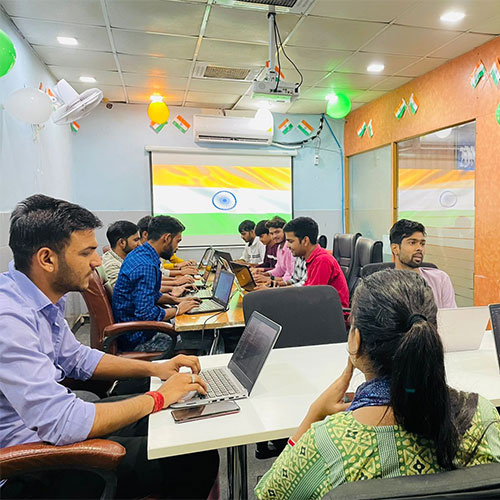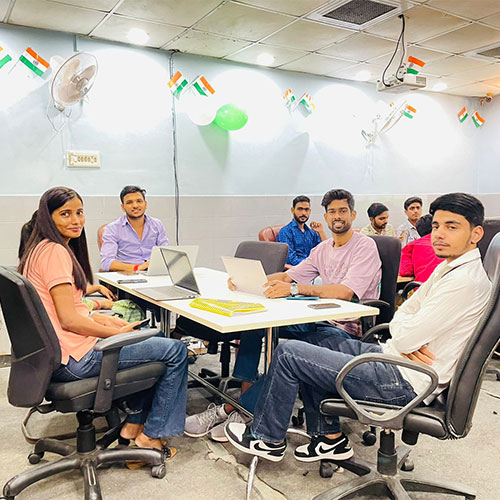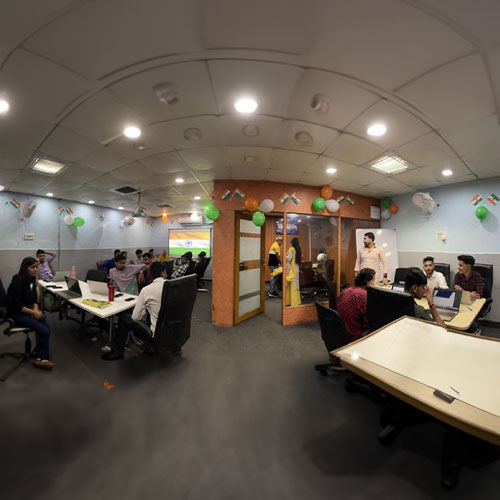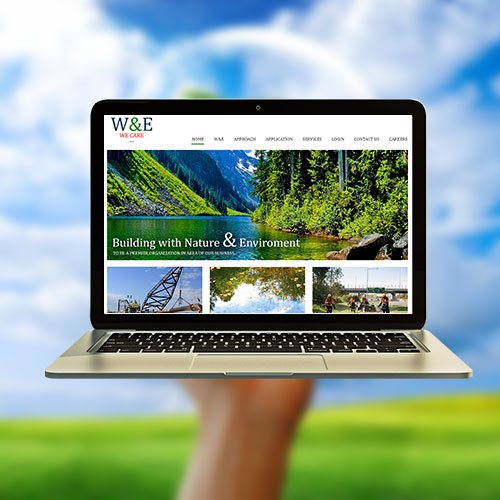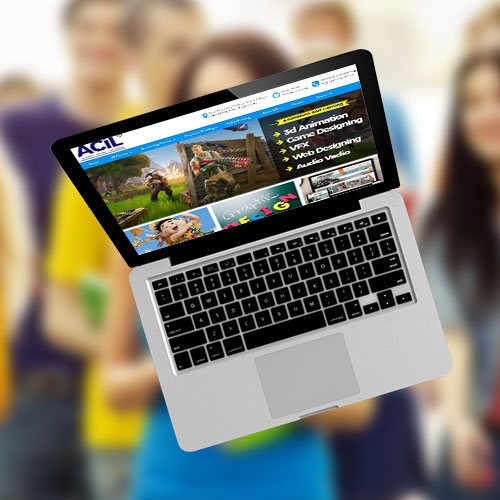The term “Full Stack Development” refers to creating an app and a website from scratch. Websites are built by front- and back-end developers, who are equally responsible for their design and implementation. Full-stack developers are capable of designing and building cutting-edge websites and mobile applications.
They can handle all aspects of development, from the front to to back-end. Enroll in the Full Stack Developer Training in Gurgaon to learn the most recent skills. Choosing the right platform for a better future can help you get more profound knowledge and be more successful in your life.
What is Full Stack Development?
Full Stack Development is a technique related to development that aims at doing the work on both sides: front-end and back-end of the web application. A full-stack developer not only designs the user interface through HTML, CSS, and JavaScript but also manages databases, the server, as well as the application logic with the back-end technologies such as Node.js, Python, or PHP.
All these enable full-stack developers to build complete web applications by themselves. Full-stack development is a combination of both design and functionality, which makes it one of the most in-demand skills these days. It allows the professionals to create end-to-end solutions.
What Does a Full Stack Developer Do?
The Full Stack Developer is in charge of client development (front-end) and server development (back-end). They create user-responsive websites, efficient APIs, databases, and convenient user experiences.
They have a responsibility for writing clean code, connecting third-party services, debugging, and releasing applications. One of the technologies that full-stack developers use includes JavaScript, React, Node.js, MongoDB, Python, and others.
They work in tandem with UI/UX designers and backend engineers to develop scalable applications. They can add value throughout the software development cycle because of their generalist skills and can, therefore, be effective hires in both startups and agencies as well as large companies with multi-skilled technology requirements.
Course Objectives
Graduates of the Certificate program should be in a position to:
- Develop internet-based websites using their newly acquired knowledge and skills.
- Present ideas, information, goods, and services on websites using fundamental design concepts.
- Apply fundamental programming concepts to the design and development of websites.
- Web project management may be done effectively using the available resources.
- Develop Mobile app
- Create Complete Frontend using JavaScript frontend technologies
- Research on Multiple Technologies related to frontend and backend
- Create Database Model and Architecture
What are the pre-requisites for a full stack development course?
A full-stack development course is suggested for students, front-end and back-end developers alike.
Candidates must have graduated from high school to take this Full Stack Developer Course. Moreover, students should have a solid understanding of HTML and CSS.
- Have basic Knowledge of Computer
- Must have completed 12th or having a graduate degree.
- If he should be have basic knowledge of HTML CSS then well good
- Candidate must be good in math
What is the Total Duration of This Course?
The duration of completing the full stack development course is 12 to 15 months. This period allows practical projects, live projects, and acquaintance with the most important tools of front-end, back-end, and database development. It is meant to change students into full-stack job-ready developers by means of a well-planned and practically oriented course.
Languages Covered in Full Stack Development Course
- HTML 4.0 & 5.0
- CSS 2.0/3.0
- LESS & SAAS
- CSS Animation
- JavaScript
- Typescript
- Bootstrap
- React Js
- React – Redux
- React – Thunk
- React – Saga
- JEST JS
- Enzyme
- Node Js
- Mongo DB
- MySQL
- Angular js
- Express js
- Next Js
- Material UI
- Ant Design
- Chakra UI
- React Bootstrap
- Style Component
- Gatsby Js
- Vue Js
- Ejs and Jade
- Rest API & Restful APIs
- GraphQL APIs
Full Stack Development Course Syllabus
HTML & CSS in Front-end Development
The learning objective of this certification course is to help students understand the importance of designing web pages on the front-end. It includes courses on HTML, CSS, JavaScript, HTML SVG, Graphics, Frameworks, SQL among others. The students will also be provided with some real projects during their training that will help them learn how they can implement their skills on a project basis.
- What is HTML & HTML 4.0 & HTML 5.0
- Basic HTML Tags
- Basic Structure in HTML
- Nested HTML
- Ordered and Unordered List
- Building Tables
- Build Tables using DIV
- Nested Tables
- rowspan and colspan
- Create Newsletter and mailer using tables
- What is URL and Ancor Linking
- Link one page to another
- Target Attribute
- Navigate to Websites
- Linking Pages
- Drop down
- Position – Absolute, Relative, Fixed
- Multi Dropdown
- Create Drop down using nested List
- Modify Drop down
- After and Before
- Forms
- Input
- Textarea
- Select Box
- Button
- Types of Input
- Action and Methods
- SVG
- Create SVG using Figma
- Canvas
- SAAS in CSS
- Less in CSS
- Create Nested HTML using HTML 4.0
- Use of HTML 5.0 HTML Concepts
- HTML 5.0 Geolocation
- Webworkers
- HTML 5.0 Tags and its used
- One Page Scrolling HTML
CSS 3.0 Animation
CSS 3 animations allow smooth transitions and keyframe-based effects directly in the browser. They help create interactive UI elements without relying on JavaScript.
BEM (Block Element Modifier)
BEM is a naming convention for writing clean, reusable CSS. It improves code maintainability and avoids naming conflicts in large projects.
jQuery
jQuery is the library of java-script which help in full stack development achieve the animation, validation of HTML page.
- What is jQuery
- use of jQuery
- Version in jQuery
- this
- addClass
- removeClass
- toggleClass
- hide
- show
- slideDown
- slideUp
- slideToggle
- document.ready
- window.load
- height
- width
JavaScript
JavaScript is a programming languages used for client site web pages. it is faster than other scripting languages. it is based on Object Oriented Programming.
- What is Javascript
- Javascript Blocks
- Building and Types
- Data Types
- Control Flow
- Loops
- Expressions
- Number
- Dates
- Function & its Types
- Classes
- Promises
- Concurrency Model
- Errors
- Misc
Typescript
Typescript is an free and open source languages developed by Microsoft.
- What is Typescript
- Benefits and Setup
- Data Types
- Array
- Tuples
- Enum
- undefined
- null
- interface
- casting
- Destructing
- Spread
- Classes
- Interfaces
- Modules and Namespaces
Express Js
Express JavaScript is the framework of Node Js which is fast and moderate. This is used to create front-end and back-end application using Node Js.
- What is Express JavaScript
- Request
- Response
- Get
- Post
- Routing
- Cookies
- File Upload
- Middle ware
- Template
Angular
Angular is a JavaScript framework for developing web applications. It is used by companies such as NASA, eBay and Coca-Cola. With Angular, students can learn to build cross-platform web applications in a short time. Some of the advantages that students can expect from Angular are perfect browser compatibility and an easy installation process. What’s more, they can create interactive front end apps with animations and HTML 5 features after learning Angular fundamentals.
Angular Js SyllabusReact Js
You’ll gain real-world experience and skills that will help you land a job in the field of software engineering. React JS Certification Training Course is designed specifically for people who want to make their first step into the world of software development. It’s easy to follow and offers an interactive curriculum that will be sure to entertain even the most reluctant students.
- What is React Js
- Virtual DOM
- Functional Component
- Class Component
- Life Cycle Method
- Hooks
- useState
- useEffect
- useReducer
- useMemo
- useCallback
- Redux
- Thunk
- Saga
Node Js
Build complex projects using JS or CSS frameworks: AngularJS, ReactJS, EmberJS etc. The Node.js Certification Training Course will help students to learn the fundamentals of Node.js along with the basics of JavaScript that are needed to understand how the language works and how it is used in this environment. They will get practical knowledge on how to use Node.js to build both backend and front-end web applications as well as mobile apps using this framework effectively through project tutorials, examples, and case studies.
- What is Node Js
- Advantages and Disadvantages of Node Js
- Install Node.js on Windows, Mac, and Linix
- Function
- Modules
- Buffer
- Local and Core Modules
- npm
- installing and upgrading packages
- dependencies
- http requests
- File Systems
- Debugging
- Events
- Express Js
- Static Files
- Templates Engine
- Jade
- Ejs
Python
Python is a high-level, versatile language known for its readability. It’s used in web development, data science, automation, and more.
Django
Django is a Python web framework that promotes rapid development. It follows the “batteries-included” philosophy with built-in features like ORM, auth, and admin.
Next.js (Server-Side Rendering)
Next.js is a React framework enabling routing, SSR, and static site generation. It promotes SEO, making it perfect for modern web apps.
Mongo DB
Database skills such as MongoDB are key to building successful career. The demand for these skills has been growing exponentially in recent years because of the emergence of big data analytics and cloud computing. MongoDB is a popular NoSQL database management tool which is designed for storing complex and large data sets. It’s the third most popular database on the market, with over 10 million downloads since 2010. Students should learn MongoDB Certification Training Course to hone their skills and learn from experts in the field.
- Introduction to MongoDb
- MongoDb Atlas
- Document Model in Mongo
- Database Build
- Insert and Update
- Delete
- Replace
- Modifying Query
- Indexes
- Search
- Transactions
AEM (Adobe Experience Manager)
AEM is an enterprise-level CMS. It creates digital experiences. It supports content authoring, digital asset management, and headless delivery.
NestJS
NestJS is a Node.js framework for creating scalable server-side apps. It uses TypeScript and includes OOP and functional programming principles.
Jest (Testing Framework)
Jest is a JS-based testing framework. It is maintained by Meta. It offers mocking, snapshot testing, and works well with TypeScript and React.
Chai
Chai is a TDD/BDD assertion library for the browser and Node.js. It provides readable assets for testing JavaScript code.
Mocha
Mocha is a JS test framework. It allows flexible asynchronous testing using various assertion libraries.
RTL (React Testing Library)
React Testing Library improves testing from the user’s perspective. It provides the best practices by focusing on behavior rather than implementation.
unittest (Python)
Unittest is Python’s built-in testing framework based on Java’s JUnit. It supports test creation, setup/teardown, and test case grouping.
Pytest
Pytest is a powerful testing tool in Python with simple syntax and rich plugins. It supports fixtures, parameterized tests, and easy test discovery.
Material UI
Material UI is a popular React UI framework based on Google’s Material Design. It offers the best-in-class components and themes for building UIs quickly.
Tailwind CSS
Tailwind CSS is a utility-first CSS framework. It is used for creating UI in less time. It promotes design consistency with predefined spacing classes, color, and layout.
Ant Design
Ant Design is a React UI library with enterprise-grade components. It’s widely used in dashboards and business applications for its clean look.
Chakra UI
Chakra UI is a simple, accessible React component library. Its styling system is props-based, allows ease of use and high flexibility.
AWS (Amazon Web Services)
AWS provides several hosting, storage, and computing cloud services. It’s widely adopted for scalable, secure deployments and serverless architecture.
Azure
Microsoft Azure is a cloud platform for building, testing, and deploying applications. It supports hybrid cloud, DevOps pipelines, and enterprise-level services.
Google Cloud Platform (GCP)
GCP provides cloud solutions like compute, storage, and machine learning APIs. It supports containerization with GKE and integrates well with Google’s services.
GIT
Git is a distributed version control system used for tracking code changes. It enables collaboration, branching, and rollbacks in software development.
Career after Full-stack development course
Let’s look at the many career paths we open as full-stack developers now that we’ve mastered the essential skills.
Full-stack developer
- Get high Range Salary approx. starting 20 – 40 LPA
- Opportunity to become a project manager
- You can handle frontend, backend and mobile app both
- Chances to get job easily
- Salary Hike Rate is high
Developer Backend
- Work in Backend Technologies with Node and Python or PHP
- Opportunity to become a team lead backend
- Salary hike is average
- Get starting 15- 25 LPA
Developer’s front-end
- Work with React and Angular
- Starting 5-15 LPA
- You will get high in low salary but after few time you move to backend to get high salary
- Become a team lead in future
Web Designer
- Less hike in salary according to experience
- Salary Range 3 LPA to 6 LPA
- No good Growth
Student Loan
Students can also take loans at 0% Interest and pay in easy EMIs.
How ACIL Students Prepare for Better Jobs:
- A team of tutors is on hand to help students prepare for their interviews.
- Several interviews are offered to students by the Placement team.
- Trainers and lab facilities belonging are given to the students
- Exam Dumps for Full Stack Developer are performed
- Professional Certification Guidance and Support are then provided.
- Work with directly client projects
- They will pay you after you get the job
- Experience also provided if student take internship
How Do I Get a Job After Completing the Full Stack Development Course?
By the end of the full stack development course, you will be ready to work on a portfolio of live projects, good coding skills, as well as support in interview preparation. Placement assistance, along with resume creation, mock interview, and referral to hiring partners, is typically provided by institutes. You will even have technical skills to apply as a Full Stack Developer, Web Developer, and/or a Software Engineer.
You can boost your visibility by building a good LinkedIn, contributing to GitHub, and applying in job portals. This will make you competitive in the contemporary work environment since companies seek individuals with practical experience, which you will attain on the real-time projects enlisted in the course.
Recently Placed Students in TOP MNC – Reviews
- It was an excellent opportunity for growth. I was impressed with the trainer’s knowledge and enthusiasm, and I want to express my gratitude to the Training and Placement Cell for their continual assistance.
- I am happy to be a student at this institute, where I am given many opportunities and well supported by the faculty and the career advisors. Having the chance to be an IT engineer is a lifelong ambition.
- Their faculty members are amicable and helpful. The school’s Placement Cell is also doing a fantastic job placing students in top MNCs and providing them with valuable corporate experience.
-
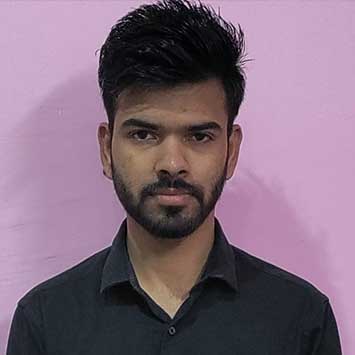
Shivendra Singh
Frontend Developer – 5.2 LPA -

Bhuvesh Singla
Full Stack Developer – 14 LPA -

Deepak Beniwal
Backend Developer – 5 LPA -
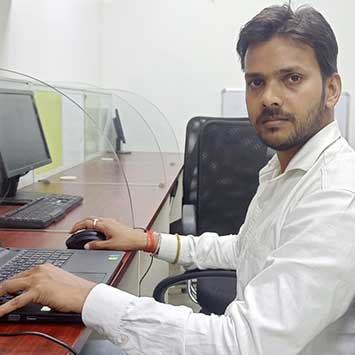
Pawan Kumar Mall
Web Developer – 4.6 LPA -

Shivam
React Developer – 11 LPA -

Deepak Tyagi
Frontend Developer – 9 LPA
Get Industry Recognized ACIL Certificate in Full Stack Developer Training
ACIL accreditation is recognized by all of the world’s leading high-end enterprises. Full Stack Developer Courses in Gurgaon teaches you how to build web applications from the ground up, including the front end, middle, and back ends.
You will learn how to make a complete application, including testing and implementing code, using Mongo DB, and more. It enhances your professional profile. MNCs throughout the globe are looking for people with this qualification.
About ACIL Full Stack Developer Trainer
- Trainer have 13+ Year Experience
- Have work in Multiple MNC
- Strong Experience in Frontend and Backend
- Work with Agile Technologies
- Experience in React Node Mongo, Angular, PHP etc
- Experience in Project Management also
Key Features
Industry expert facilities
The experts are highly experienced in their field and provide world-class knowledge in the best possible way to the students.
Live Projects Work
live project facility allows the students to have a more deep knowledge about the project and understand it much better.
Directly work with Remote client project
Direct work with remote clients helps to facilitate the feature of individualism in one and helps to better understand the objectives and framework.
Faculty have 15+ Year Experience
Our faculty has 15+ years of experience in the field which in turn improves the productiveness of the course and the students.
Multiple Projects during course
Multiple projects during the course are also afford to the students to have better grasp of the course and gain some extra knowledge.
Internship provided during the course
Internship is provided during the course to boost the morale of the student and helps them to perform better in their field.
Training Advantages in Be Practical
There are several practical advantages of full stack development course in Gurgaon. Some of these advantages are listed below:
- Free demo classes
- Backup classes
- Real-time projects
- Job-oriented courses
- Free HR sessions
- Free technical assistance
- Dedicated trainers
- Smooth evaluation process
- Top interview tips
FAQ
Are the trainers experienced?
Yes, the trainers are very experienced and help the students gain the best of their knowledge.
What is the duration of a full-stack?
People with a strong desire to study should aim for a minimum of Twelve to Fifteen months to complete the course
Who can learn full-stack?
If a student has good understanding of Math and Reasoning then he must be good developer.
What are the career prospects for full-stack?
A full-stack developer might take on various tasks and responsibilities when working in a group. As a result, they are expected to grasp the fundamentals of both front-end and back-end engineering and the fundamentals of design and DevOps
Can I attend a demo session before enrollment?
Yes, you can attend, 7 demo free classes are available. After that, it will paid for each classes, until student is not satisfied
Whether will there be a coding test conducted?
After you have passed the first round, a mandatory element for you to complete is the coding exam.
What are the minimum and maximum salaries for full-stack for freshers?
In India, a newbie may expect to make around 3,75,000 as a full-stack developer. A salary of INR 12-14 lakhs may be scheduled for a person with 5-9 years of mid-level expertise.
What if I miss classes?
If you miss the class, we will schedule an extra class for you.
What modes of training are available?
- On-the-job-oriented training methods.
- Simulation Methods
- Knowledge-Based Method
- Experiential Methods
- Offline
Do you provide placements?
Yes, placements are provided to the students who excel in the course. 100% Placement Gaurantee , Get a staring salary of ₹30,000 , If the student is talented then salary may go upto 10 LPA – 20 LPA
Do you provide experience?
Yes, If the student join our internship program then we provide.
If I not get job what you do?
If student complete the course and one live project independently then we start to pay that student according to their skills
Can I Become full stack developer without having college degree?
The answer to that question depends on the employer. A lot of companies are willing to take a chance on you if they see potential, but it can be hard to move up in the company without an IT degree.
Many companies are now hiring more full-stack developers with degrees in other fields. This doesn’t work for every company, but some are realising that their new hires have an advantage because they have a holistic understanding of the company’s business.
Did I get Certificates after completing this course?
Yes, ACIL provides you certification and which helps to build your future more secure and strong.
What I can start learning before the classes start?
The best way to approach the full stack development course is to start with the JavaScript fundamentals and then move on to Typescript. After that, you can learn about React and Node.js as well as how they work together. But if You are a beginner then you can start watching HTML, CSS YouTube Video to know what you will learn With ACIL.
Why should we choose full stack development course instead of individual course?
The main problem with going for individual courses is that most of the times, you don’t get a holistic view of how the knowledge you have acquired in one subject translates to others.
In full stack development courses, there is a complete focus on web development and most importantly, it covers front-end and back-end together which helps develop a deep understanding of how all these different parts work.
There are many benefits of going for a full stack course rather than an individual course. For example, if you want to become a web developer or back-end developer then you can go for front-end coding course or back-end coding course separately but that will not help you in understanding both the ecosystems together.

